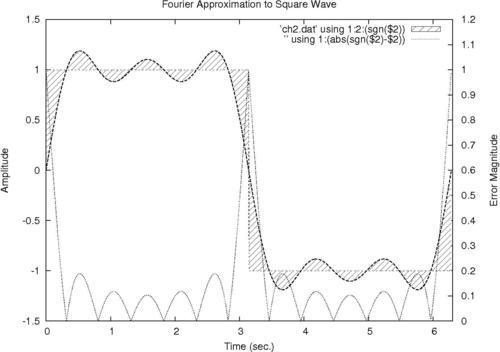In this recipe, we add labels to our axes to explain what is being plotted and the significance of the tics and numerical scales. We also add an overall title that will appear at the top of the graph.

Make sure the supplied datafile ch2.dat is in your current directory. It is the result of adding the first three terms in the Fourier series approximation to the square wave. It is not important to understand what that means to follow the gnuplot recipes; we are using this file because it leads to a good graph for the purpose of illustrating annotations and labeling.
Following is the script that produces the previous annotated graph:
set yrange [-1.5:1.5] set xrange [0:6.3] set ytics nomirror set y2tics 0,.1 set y2range [0:1.2] set style fill pattern 5 set xlabel "Time (sec.)" set ylabel "Amplitude" set y2label "Error Magnitude" set title "Fourier Approximation to Square Wave" plot 'ch2.dat' using 1:2:(sgn($2)) with filledcurves,\'' using 1:2 with lines...



